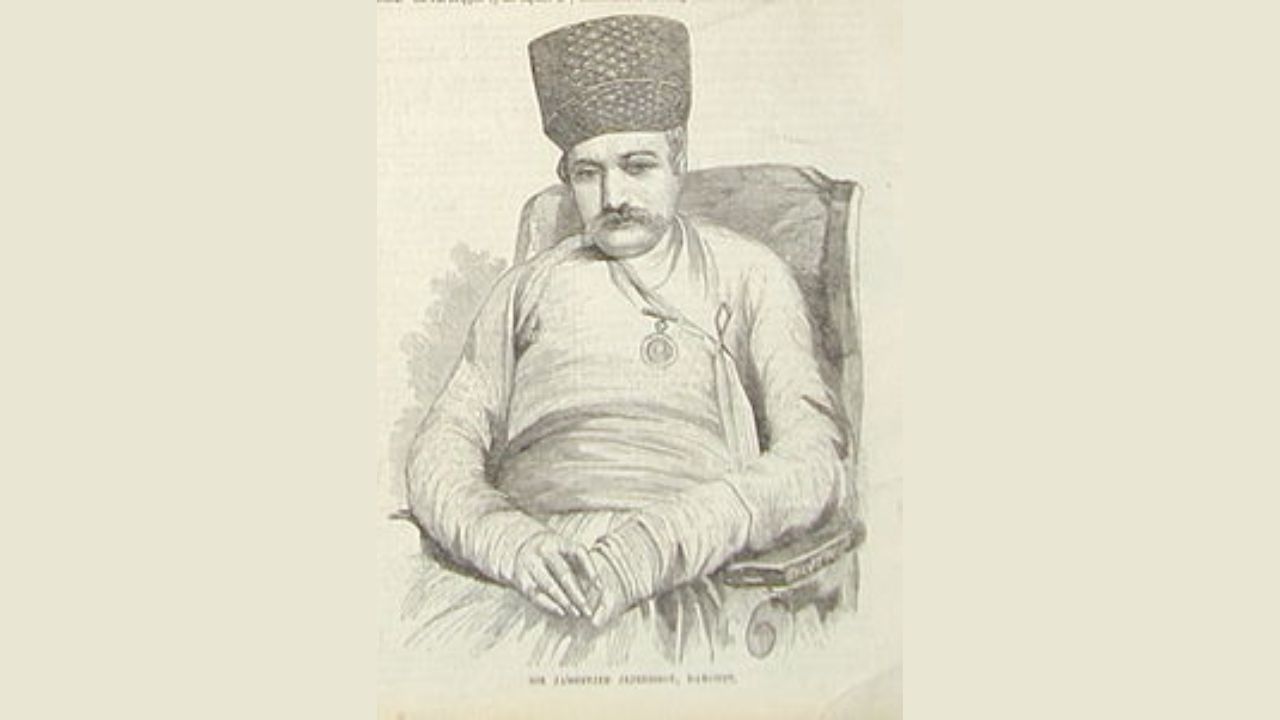Jamsetjee Jejeebhoy Biography: The existence of Jamsetjee Jeejeebhoy, one of the wealthiest men in India in the 19th century, can be divided into two acts: the first as a businessman, and the second as a statesman and philanthropist serving the community.
Jamsetjee Jeejeebhoy was born in Gujarat to a Parsi family on July 15, 1783. Before the age of 16, he lost his parents and moved to Bombay to work with his maternal uncle, purchasing and selling empty spirits bottles.
Jamsetjee Jejeebhoy Biography:
Early years
Jejeebhoy, the son of Merwanjee Mackjee Jejeebhoy and Jeevibai Cowasjee Jejeebhoy, was born in Bombay in 1783. In the 1770s, his father, a textile merchant from Surat, Gujarat, migrated to Bombay. In 1799, both of Jeejeebhoy’s parents passed away, leaving him in the care of his maternal uncle, Framjee Nasserwanjee Battliwala. At the age of 16, with little formal education he made his first trip to Calcutta and then sailed to China to barter cotton and opium.
Jejeebhoy made his second trip to China aboard a vessel from the East India Company’s fleet. During the Battle of Pulo Aura, this ship, commanded by Sir Nathaniel Dance, drove off a French squadron led by Rear-Admiral Charles-Alexandre-Leon Durand Linois.
On Jejeebhoy’s fourth voyage to China, the Indiaman he departed in was forced to surrender to the French, who transported him as a prisoner to the Cape of Good Hope, a neutral Dutch possession at the time. Jejeebhoy arrived in Calcutta aboard a Danish ship after much delay and considerable difficulty. Unfazed, Jejeebhoy embarked on a voyage to China that was more fruitful than any of his previous endeavours.
Jamsetjee Jejeebhoy Career
By this time, Jejeebhoy had earned a reputation as an enterprising merchant with a substantial fortune.In 1803, he wed the daughter of his maternal uncle, Avabai (d. 1870), and settled in Bombay, where he directed his extensive commercial operations. Approximately at this time, he altered his name from “Jamshed” to “Jamsetjee” to more closely resemble the Gujarati community’s names. By the time he was 40, he had earned more than two crore rupees, a staggering amount in those days. During the Napoleonic Wars, the cotton commerce brought him additional wealth. He purchased his own ship armada. The then-Governor of Bombay, Lord Elphinstone, said of him, “By strict integrity, industry, and punctuality in all his commercial transactions, he contributed to the enhancement of the reputation of the Bombay merchant in the most distant markets.”
In 1814, his cooperation with the British East India Company yielded sufficient profits for him to buy his first ship, the Good Success. He gradually added six more ships to this fleet, which carried predominantly opium and a small amount of cotton to China. By 1836, Jejeebhoy’s business was large enough to employ his three sons and other relatives, and he had amassed what was regarded as extraordinary wealth during that era of Indian commercial history.
Mr. Bottlewalla was the moniker for Jejeebhoy. On the premise of his uncle’s business, Jejeebhoy’s business interests included the production and sale of bottles. Jejeebhoy and his family frequently signed letters and checks with the surname “Battliwala” and were known by this name in business and society, but he did not select this fictitious surname for the baronetcy.
In 1818, he established the business, trading, and shipping enterprise “Jamsetjee Jejeebhoy & Co.” with two other business partners, Motichund Amichund and Mahomed Ali Rogay. Later, he was accompanied by Rogério de Faria, a Goan. His voyages to China resulted in a lengthy trading partnership with Jardine Matheson & Co., based in Canton. The connection with Jeejeebhoy was crucial to Jardine and Matheson’s success in building their company, as they maintained a profitable and cordial relationship with the Parsi businessman. Jeejeebhoy remained one of Jardine, Matheson, and the Company’s closest underwriters for a very long time. Even today, a portrait of Jeejeebhoy hangs in the Hong Kong office of Jardine as a tribute to their relationship. British Imperial authorities viewed him as the principal representative of the Indian community in Bombay.
Honour
Queen Victoria bestowed knighthood upon Jamshetj Jeejeebhoy, the first Indian to receive it, at the age of 74.
Jim Jones Biography: Age, Height, Birthday, Family, Net Worth
Jamsetjee Jejeebhoy Social Contribution
- He was a generous philanthropist who donated 234,272 pounds to the city of Bombay.
- He spent Rs 145,403 to establish Sir J.J. Dharamshala on Bellisis Road, Asia’s first free residence for the elderly.
- Founded Grant Medical College (named after his close friend, Bombay’s governor Sir Robert Grant) – Jamshetj Jeejeebhoy constructed wells and reservoirs throughout Bombay – Included Sir J.J. School of Arts among 126 public charities.
- Donated Rs 80,000 for animal care, livestock construction, etc.




